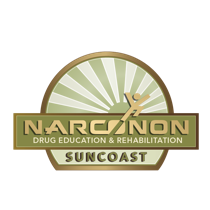Maryland Opiate Deaths Quadrupled Since 2010

Coast-to-coast, the opiate crisis is getting worse. The news constantly reflects the bleak condition of our country and it seems like every day there is a new “overdose capital” of the United States. Not only does the situation seem to be worsening, the numbers prove that it is. Emergency room and hospital admissions are way up across the nation because of complications due to opiate use. Maryland is one of the hardest-hit states when it comes to opiate abuse and, of course, synthetic opiates like Fentanyl are the main culprits.
Based on the latest statistics put out by the Agency for Healthcare Research and Quality, the state of Maryland has one of the highest hospital inpatient care rates in the nation. A recent report from Maryland showed that fatal opiate overdoses have quadrupled since 2010, which is concurrent with the 38% increase in Fentanyl-related deaths. Leana Wen, the city’s health commissioner said, “We see overdoses in all ethnic groups, in all zip codes.”
On June 1st, 2017, the health commissioner signed a bill making Narcan (Naloxone) available over-the-counter at all major pharmacies. Narcan (Naloxone) is an opiate overdose antidote and works by blocking the opiate receptor sites in the brain, effectively “turning off” the opiates and reversing the action of the overdose. Leana Wen has urged all state residents to go out and get Narcan so they can be prepared to help anyone they come across who may need it. Ms. Wen said that she wasn’t at all surprised by the enormous surge in emergency room and hospital visits because a lot of people go there with the hopes of getting treatment for their addiction but, unfortunately, aren’t always able to receive it.
This is the biggest problem our society is facing in the wake of the opiate crisis. There’s not enough treatment available to help the thousands upon thousands of drug users who need it. Many addicted individuals and their families can’t afford private treatment and are left with the few options available in their area. And a lot of the time, the few options that do exist either don’t have enough beds or enough funding to hire an appropriate amount of the staff to care for the people they treat. The result is subpar treatment being delivered at facilities which are under-funded and under-staffed, therefore creating major spatial restrictions that reduce the amount of people they can help, thus creating lengthy waiting lists for people to get in. No one who is addicted to drugs can wait to get into treatment. Once they’re ready to go, they need to get in immediately. There’s a very small window of opportunity to get them help because as quickly as that window opens, it can shut just as fast. We need to make more quality treatment available to everyone who needs it, not just the lucky ones whose family can afford to send them to a decent program. Once we make more treatment available, we might finally begin to see a shrinking of the opiate problem and finally start getting a handle on it.
